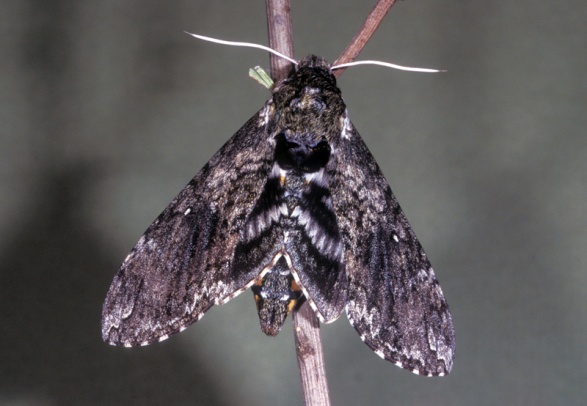
Tobacco hornworm
Manduca sexta (Linnaeus)
(Insecta: Lepidoptera: Sphingidae)
Adult moths are dull brown with six orange spots along each side of the abdomen. Their wings are narrow and spread to over 100 mm. Eggs are spherical, about 1.5 mm in diameter, and light green to white. Larvae develop into large caterpillars that are over 80 mm in length. They are green with seven white, diagonal stripes laterally along each side of the abdomen and bear a characteristic red horn at the rear end. Pupae are up to 60 mm long, brown, and bear a conspicuous loop that encases the mouthparts.
The life cycle may be completed in four to seven weeks, and depending on climate, two to four generations occur per year. Adults and larvae are active between April and November, and pupae diapause during the winter. The moths are active and fly at dusk.
Although its distribution ranges from Canada to Argentina, tobacco hornworm is especially common in the southern United States along the Gulf Coast.
The host range is restricted to plants in the family Solanaceae, and tobacco is preferred.
Images
To
save the Web-optimized images shown below to your hard drive:
PC users: right click to "Save Picture (or Image) As..."
Mac users: click and drag to your desktop.

Adult of tobacco hornworm, Manduca sexta (Linnaeus)
(Photographer: Paul Choate, University of Florida)

Adult of tobacco hornworm, Manduca sexta (Linnaeus), with spread wings
(Photographer: James Castner, University of Florida)

Egg (right) and first instar (left) of tobacco hornworm, Manduca sexta (Linnaeus)
(Photographer: James Castner, University of Florida)
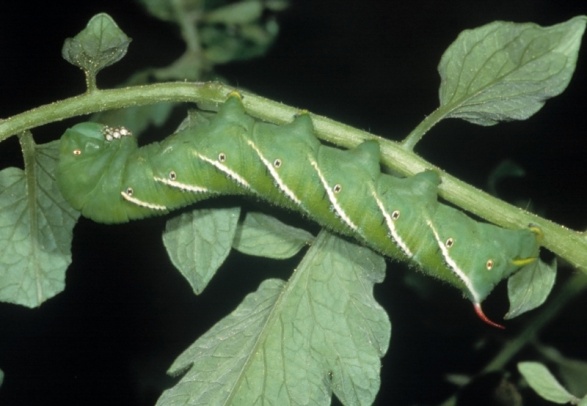
Larva of tobacco hornworm, Manduca sexta (Linnaeus)
(Photographer: James Castner, University of Florida)
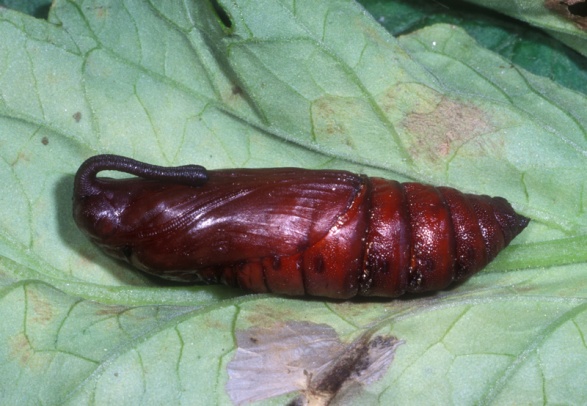
Pupa of tobacco hornworm, Manduca sexta (Linnaeus)
(Photographer: Paul Choate, University of Florida)
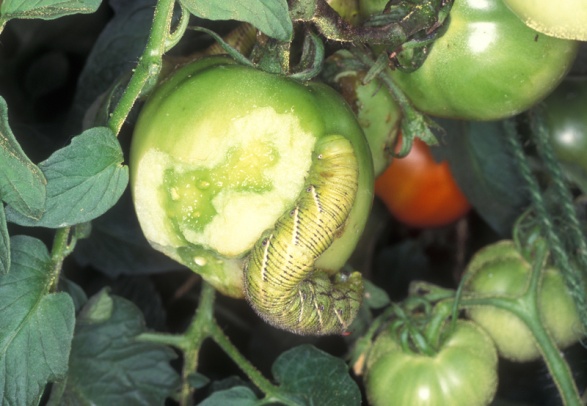
Larva of tobacco hornworm, Manduca sexta (Linnaeus), feeding on tomato fruit
(Photographer: James Castner, University of Florida)

Tomato fruit damaged by tobacco hornworm, Manduca sexta (Linnaeus)
(Photographer: James Castner, University of Florida)
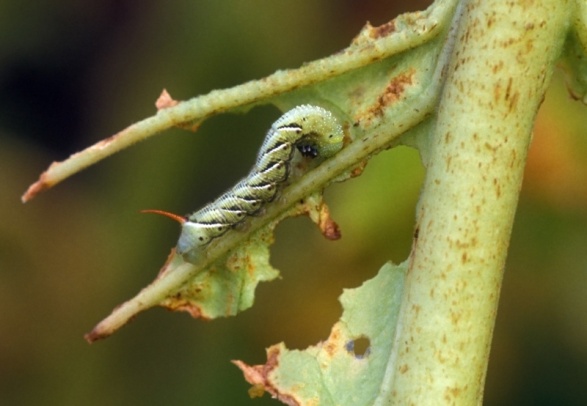
Larva of tobacco hornworm, Manduca sexta (Linnaeus), feeding on tobacco plant
(Photographer: James Castner, University of Florida)

Tobacco field damaged by tobacco hornworm, Manduca sexta (Linnaeus)
(Photographer: James Castner, University of Florida)